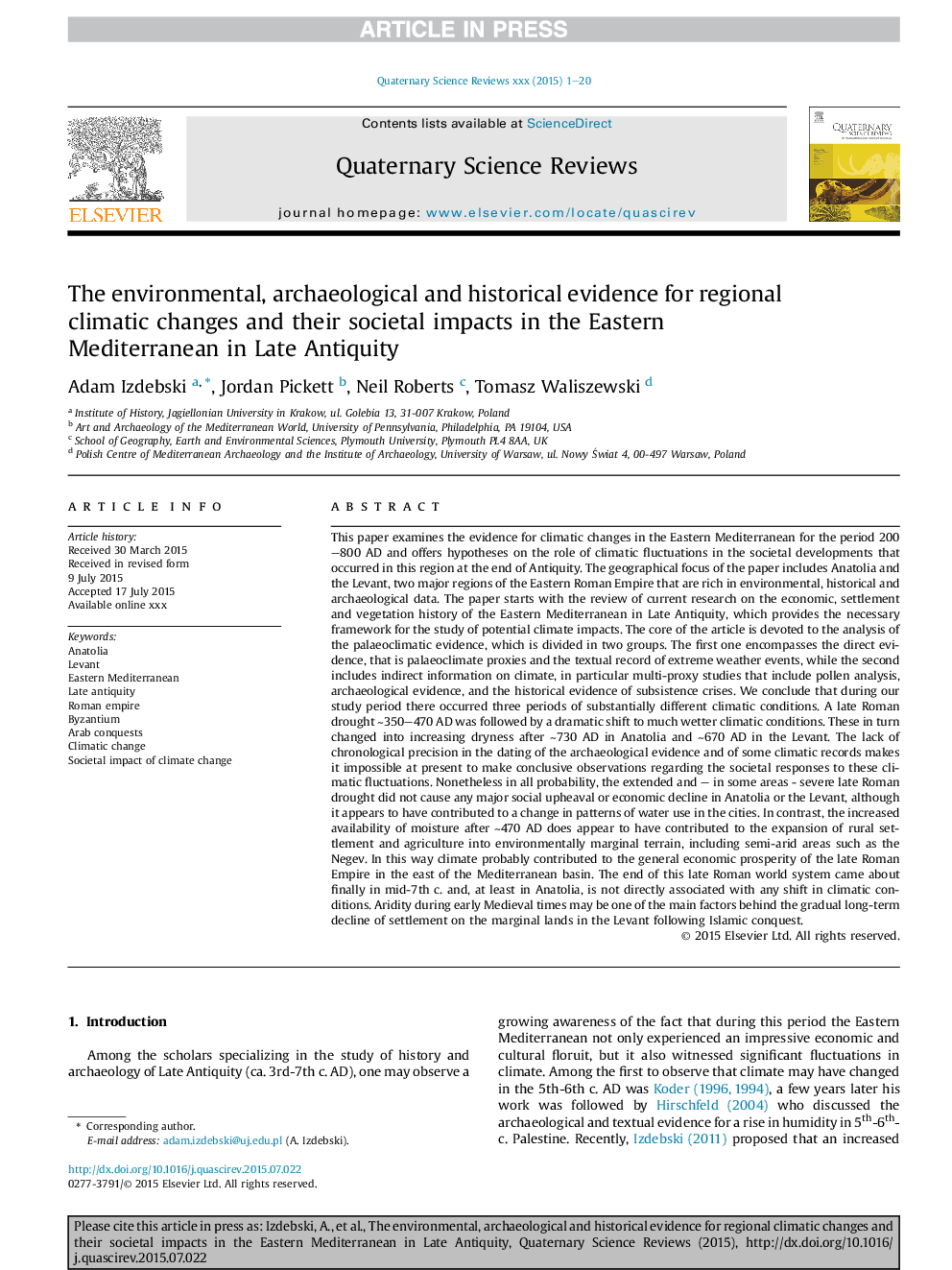| کد مقاله | کد نشریه | سال انتشار | مقاله انگلیسی | نسخه تمام متن |
|---|---|---|---|---|
| 6446594 | 1640799 | 2016 | 20 صفحه PDF | دانلود رایگان |
عنوان انگلیسی مقاله ISI
The environmental, archaeological and historical evidence for regional climatic changes and their societal impacts in the Eastern Mediterranean in Late Antiquity
ترجمه فارسی عنوان
شواهد زیست محیطی، باستان شناسی و تاریخی برای تغییرات اقلیمی منطقهای و تأثیرات اجتماعی آنها در دریای مدیترانه در اواخر قرن
دانلود مقاله + سفارش ترجمه
دانلود مقاله ISI انگلیسی
رایگان برای ایرانیان
کلمات کلیدی
آناتولی، لووانت، مدیترانه شرقی، دیرینه دیرینه، امپراطوری روم، بیزانس، تسلط عرب، تغییرات آب و هوایی، تاثیر اجتماعی تغییرات اقلیمی،
موضوعات مرتبط
مهندسی و علوم پایه
علوم زمین و سیارات
زمین شناسی
چکیده انگلیسی
This paper examines the evidence for climatic changes in the Eastern Mediterranean for the period 200-800 AD and offers hypotheses on the role of climatic fluctuations in the societal developments that occurred in this region at the end of Antiquity. The geographical focus of the paper includes Anatolia and the Levant, two major regions of the Eastern Roman Empire that are rich in environmental, historical and archaeological data. The paper starts with the review of current research on the economic, settlement and vegetation history of the Eastern Mediterranean in Late Antiquity, which provides the necessary framework for the study of potential climate impacts. The core of the article is devoted to the analysis of the palaeoclimatic evidence, which is divided in two groups. The first one encompasses the direct evidence, that is palaeoclimate proxies and the textual record of extreme weather events, while the second includes indirect information on climate, in particular multi-proxy studies that include pollen analysis, archaeological evidence, and the historical evidence of subsistence crises. We conclude that during our study period there occurred three periods of substantially different climatic conditions. A late Roman drought â¼350-470 AD was followed by a dramatic shift to much wetter climatic conditions. These in turn changed into increasing dryness after â¼730 AD in Anatolia and â¼670 AD in the Levant. The lack of chronological precision in the dating of the archaeological evidence and of some climatic records makes it impossible at present to make conclusive observations regarding the societal responses to these climatic fluctuations. Nonetheless in all probability, the extended and - in some areas - severe late Roman drought did not cause any major social upheaval or economic decline in Anatolia or the Levant, although it appears to have contributed to a change in patterns of water use in the cities. In contrast, the increased availability of moisture after â¼470 AD does appear to have contributed to the expansion of rural settlement and agriculture into environmentally marginal terrain, including semi-arid areas such as the Negev. In this way climate probably contributed to the general economic prosperity of the late Roman Empire in the east of the Mediterranean basin. The end of this late Roman world system came about finally in mid-7th c. and, at least in Anatolia, is not directly associated with any shift in climatic conditions. Aridity during early Medieval times may be one of the main factors behind the gradual long-term decline of settlement on the marginal lands in the Levant following Islamic conquest.
ناشر
Database: Elsevier - ScienceDirect (ساینس دایرکت)
Journal: Quaternary Science Reviews - Volume 136, 15 March 2016, Pages 189-208
Journal: Quaternary Science Reviews - Volume 136, 15 March 2016, Pages 189-208
نویسندگان
Adam Izdebski, Jordan Pickett, Neil Roberts, Tomasz Waliszewski,
